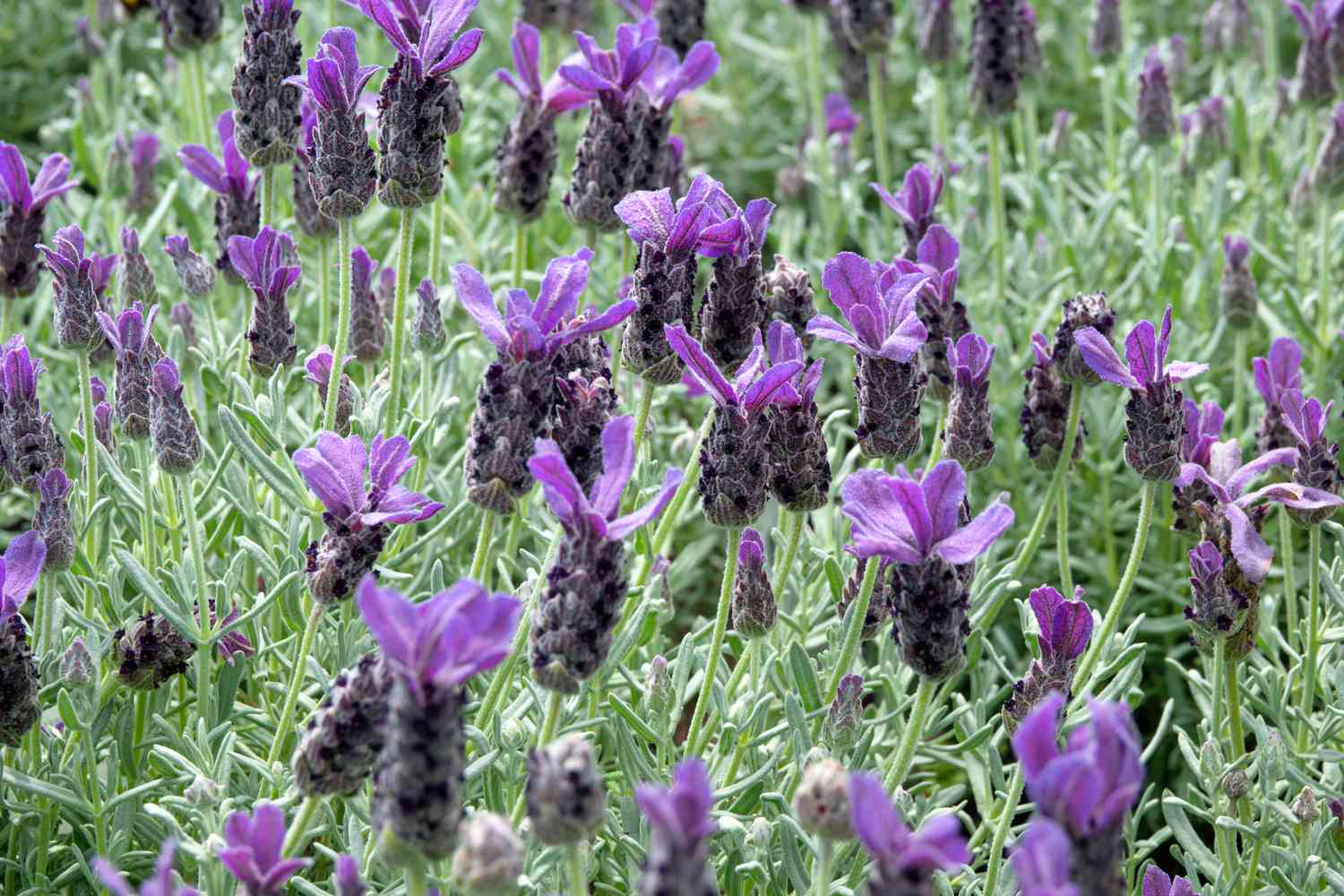
Spanish lavender, also known as Lavandula stoechas, is a captivating and versatile plant that has captured the hearts of gardeners and plant enthusiasts around the world. With its vibrant purple flowers and distinctive scent, Spanish lavender brings a touch of Mediterranean charm to any garden or landscape. But did you know that this beautiful plant holds some truly unbelievable facts? From its unique bloom structure to its historical significance, Spanish lavender is a plant that is full of surprises. In this article, we will explore nine fascinating facts about Spanish lavender that will leave you in awe. So, get ready to be amazed by the intriguing world of Spanish lavender!
Key Takeaways:
- Spanish Lavender is a special type of lavender with pinecone-shaped flowers and a strong scent. It’s native to the Mediterranean and has a rich history of cultural significance and therapeutic properties.
- Spanish Lavender is not just pretty; it’s also practical. It attracts beneficial pollinators, is low maintenance, and can be used in cooking, skincare, and even cleaning products.
Spanish Lavender is not just lavender; it is a specific variant
Spanish Lavender, also known as Lavandula stoechas, is a unique type of lavender that stands out from other varieties. It is characterized by its distinct pinecone-shaped flowers and strong fragrance.
Spanish Lavender is native to the Mediterranean region
Spanish Lavender is indigenous to the Mediterranean region, where it thrives in the sunny and dry climate. It is commonly found in countries such as Spain, Portugal, and France.
Spanish Lavender has a rich history and cultural significance
Throughout history, Spanish Lavender has held symbolic meaning in various cultures. It was often associated with love, protection against evil spirits, and used in traditional medicinal practices.
Spanish Lavender is highly aromatic and has therapeutic properties
The essential oil extracted from Spanish Lavender is widely used in aromatherapy due to its calming and soothing effects. It is believed to promote relaxation, reduce stress, and relieve headaches.
Spanish Lavender attracts beneficial pollinators
The vibrant purple flowers of Spanish Lavender are a magnet for bees, butterflies, and other pollinators. This makes it an excellent choice for gardeners looking to attract beneficial insects to their gardens.
Spanish Lavender is drought-tolerant and low maintenance
One of the remarkable traits of Spanish Lavender is its ability to thrive in dry and sandy conditions. It requires minimal watering and is a great choice for gardeners in arid climates or those who prefer low maintenance plants.
Spanish Lavender is used in culinary applications
Spanish Lavender is not limited to ornamental use; its flowers and leaves can be used in various culinary creations. They add a subtle floral flavor to dishes, desserts, teas, and even cocktails.
Spanish Lavender has diverse varieties
Spanish Lavender comes in various cultivars, each with its unique characteristics. Some popular ones include “Otto Quast,” known for its deep purple flowers, and “Substance,” which has exceptionally long-lasting blooms.
Spanish Lavender is a versatile plant with multiple uses
Apart from its ornamental and culinary uses, Spanish Lavender has a range of practical applications. Its oils and extracts are utilized in skincare products, perfumes, and even cleaning solutions.
Conclusion
Spanish Lavender is a remarkable plant with a rich history and fascinating characteristics. Its vibrant purple flowers, aromatic fragrance, and versatility make it a beloved choice for gardeners and herbal enthusiasts alike. Whether you’re looking to add a splash of color to your garden, create a soothing herbal remedy, or simply enjoy its beauty, Spanish Lavender is sure to captivate your senses.
From its origins in the Mediterranean to its widespread popularity across the globe, Spanish Lavender has left an indelible mark in the world of plants. Its ability to attract pollinators, its drought tolerance, and its medicinal properties make it a plant worth exploring and cultivating.
So go ahead, embrace the enchantment of Spanish Lavender and witness its incredible beauty and benefits in your own garden or home. Let this remarkable plant add a touch of elegance and tranquility to your surroundings.
FAQs
1. How do I grow Spanish Lavender?
Spanish Lavender thrives in well-drained soil and requires full sun for optimal growth. It is best to plant it in the spring or fall and ensure you provide regular water during the initial stages of growth.
2. Can Spanish Lavender withstand drought conditions?
Yes, Spanish Lavender is known for its ability to tolerate drought conditions once established. Its deep root system helps it access water stored deeper in the soil.
3. Does Spanish Lavender attract bees and butterflies?
Absolutely! Spanish Lavender’s vibrant flowers with their sweet fragrance are highly attractive to bees, butterflies, and other pollinators.
4. Can I use Spanish Lavender for medicinal purposes?
Yes, Spanish Lavender has been traditionally used for its medicinal properties. Its essential oil is known for its calming and soothing effects, making it a popular ingredient in aromatherapy.
5. How can I prune Spanish Lavender?
To maintain its shape and promote flowering, prune Spanish Lavender in early spring before new growth appears. Trim back the stems by about one-third, being careful not to cut into the woody base.
6. Is Spanish Lavender a perennial or annual plant?
Spanish Lavender is a perennial plant, which means it will return year after year with proper care and maintenance.
7. Can I grow Spanish Lavender in containers?
Absolutely! Spanish Lavender can thrive in containers as long as they have good drainage. This allows you to enjoy the beauty and fragrance of Spanish Lavender even if you have limited garden space.
8. Can Spanish Lavender be used in cooking?
Yes, Spanish Lavender can be used as a culinary herb, adding a subtle floral flavor to dishes. It is often used in desserts, teas, and savory recipes.
9. Does Spanish Lavender require any special care?
Spanish Lavender is a relatively low-maintenance plant. However, it’s important to avoid overwatering, as it prefers drier conditions. Additionally, regular pruning will help maintain its shape and promote healthy growth.
Enchanted by Spanish Lavender's allure? Nature enthusiasts will also adore exploring the captivating world of Hepatica, a charming perennial plant with mesmerizing blooms. Thyme, a medicinal plant powerhouse, boasts an array of surprising benefits waiting to be discovered. Spearmint, an aromatic plant marvel, offers a refreshing burst of flavor and aroma that's sure to delight your senses.
Was this page helpful?
Our commitment to delivering trustworthy and engaging content is at the heart of what we do. Each fact on our site is contributed by real users like you, bringing a wealth of diverse insights and information. To ensure the highest standards of accuracy and reliability, our dedicated editors meticulously review each submission. This process guarantees that the facts we share are not only fascinating but also credible. Trust in our commitment to quality and authenticity as you explore and learn with us.


